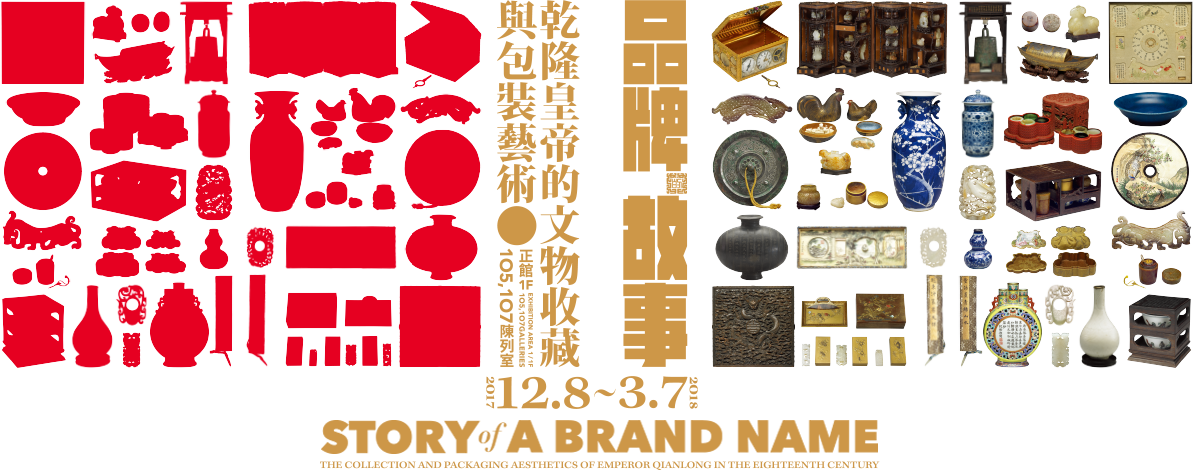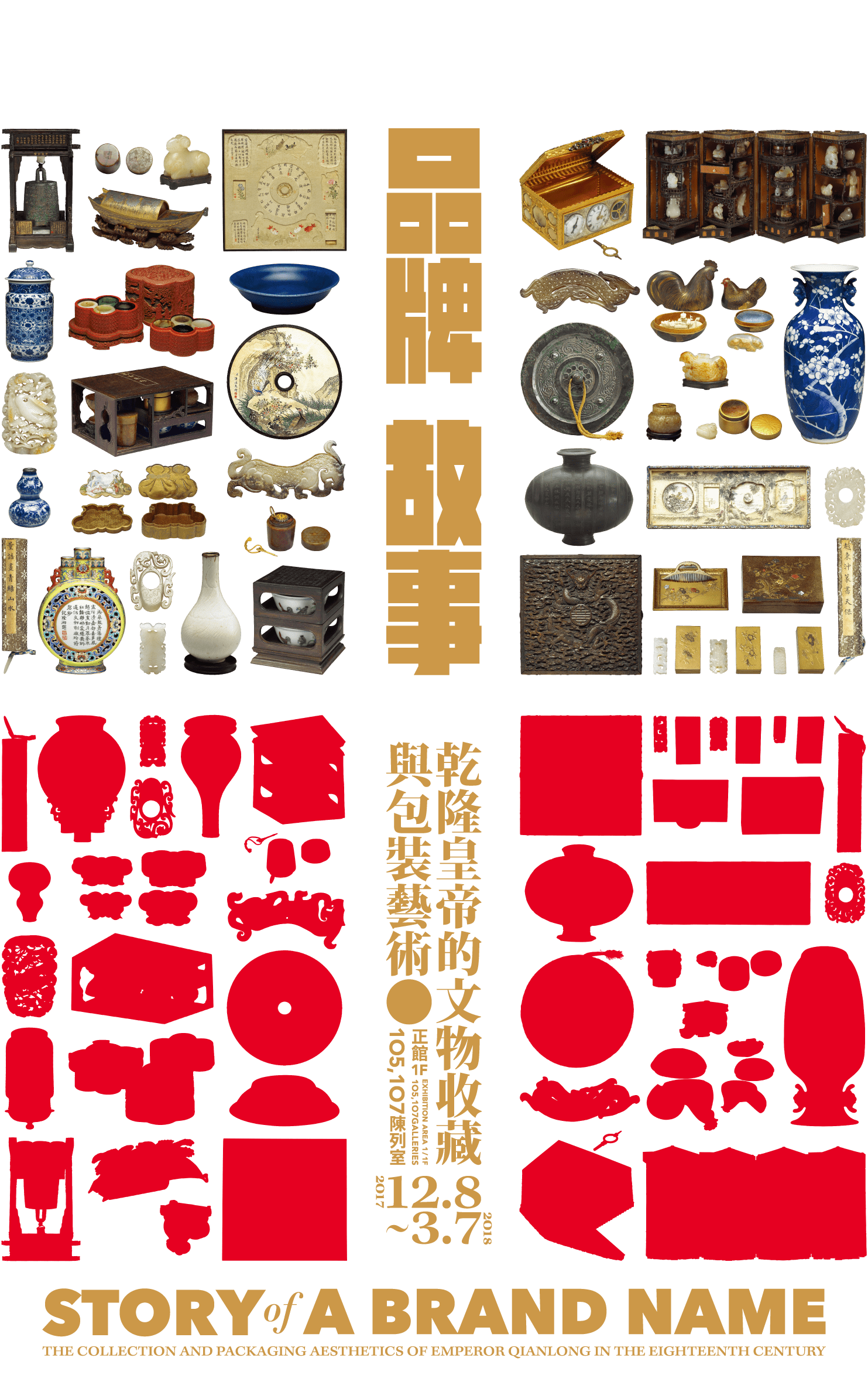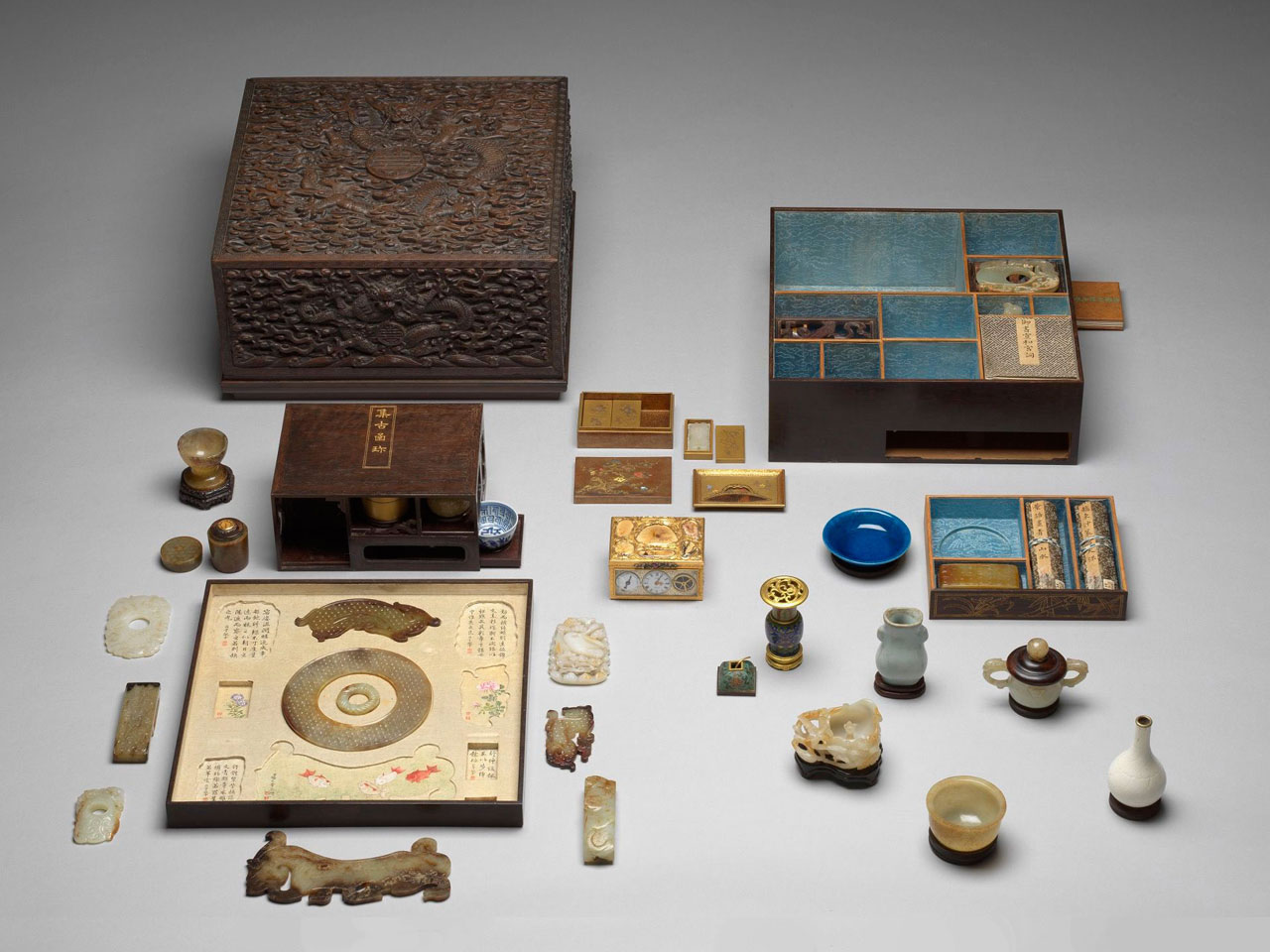The Qianlong emperor possessed a variety of treasures. Part of the collection was inherited heirlooms from the past dynasties, some were goods brought in by foreign diplomatic envoys while some were local productions offered as tributes by ministers from each province. The abundant and vast imperial collection was enriched by diversity. The Qianlong Emperor was famous for his passion for historical relics. The "Hundred-item" curio box in various sizes derived from his constant collecting, researching, arranging and organizing activities in addition to the Qianlong emperor's devotion to act on infinite affairs of the state. The "Hundred-item" curio box is also known as the "Hundred-matter" curio box; the name appeared since the Kangxi reign (1662-1722) referring to the combination of assorted historical relics. The exhibited "Hundred-item" curio box contains forty-four curios. Through the exploration of ancient jade wares, contemporary paintings and calligraphy works, lacquer wares from Japan and watch from the West; the display not only demonstrates the diverse origins of Qianlong's collection, but also emphasizes that the collection transcend the boundaries of time and space. Additionally, the Imperial manuscript wrote by the Jiaqing Emperor (1796-1820) was also included in this curio box, which revealed a unique tradition that the Qing court placed a great attention on compiling and organizing historical relics and passed it down through generations.
Square red sandalwood curio box with carved dragon decoration
- Contains 44 curio pieces
- Qing dynasty, Qianlong reign (1736-1795)
- 30.5 x 30.3 x 16.5 cm
The square red sandalwood curio box carved with dragon consists of two tiers, the upper tier decorated with calligraphy works and paintings done by Yu Minzhong (1714-1780) and Yang Dazhang (active during the mid to late Qianlong reign) holds the "Hundred-item" pieces produced in the mid Qianlong reign. The bottom tier contains various artworks including porcelains, jades, calligraphy works, paintings, Japanese lacquer ware, and Western box for the snuff bottle. The artworks are stored in spaces divided by separating plates, and the " Collective treasures" curio shelf for display can also be found inside. The ingenious space design, decoration methods, and the combination of materials all contributed to create this piece that represents the "hundred-item" curio box during the Qianlong reign. Intriguingly, two imperial albums by the Jiaqing emperor were also stored inside the box. The fact that the imperial manuscript wrote by the Jiaqing emperor can be seen on both of the calligraphy work in seal script written by Zhao Bingchong (? - 1814) and the landscape painted by Dong Gao (1740-1818) suggests that this curio box was reassembled and extended by the Jiaqing's imperial court. This curio box revealed a unique tradition that the Qing court placed great attentions on compiling and organizing historical relics and passed it down through generations.


